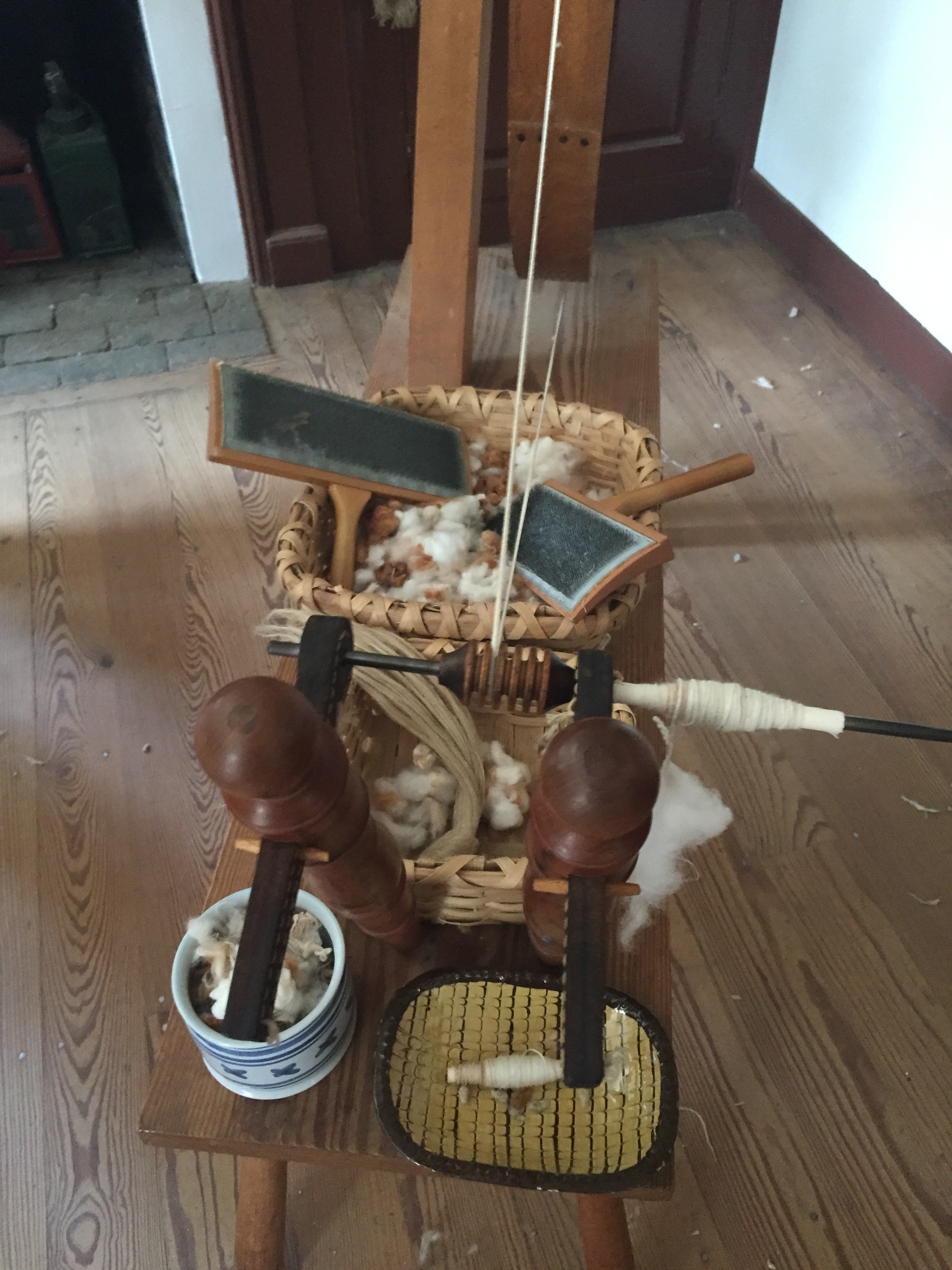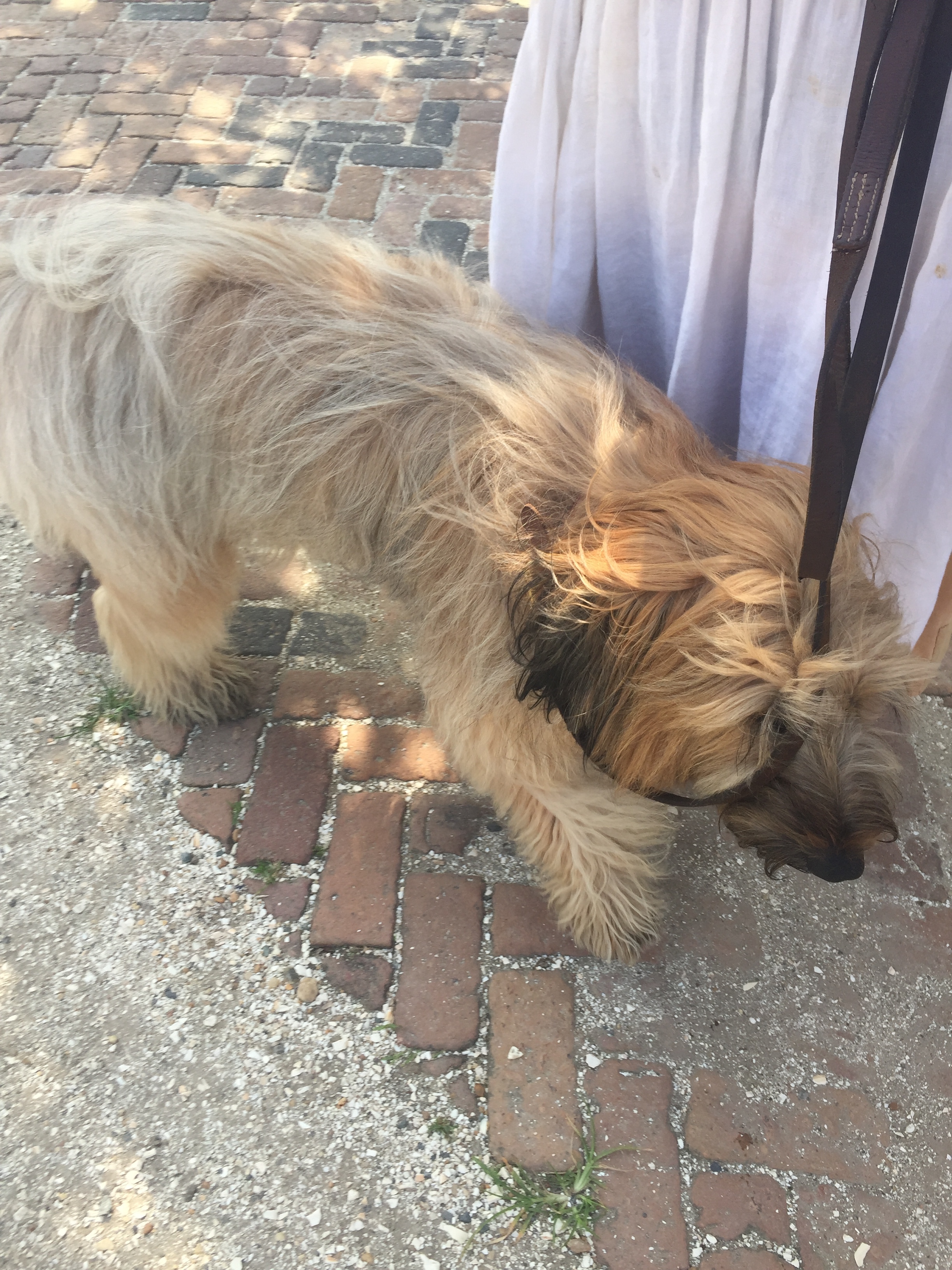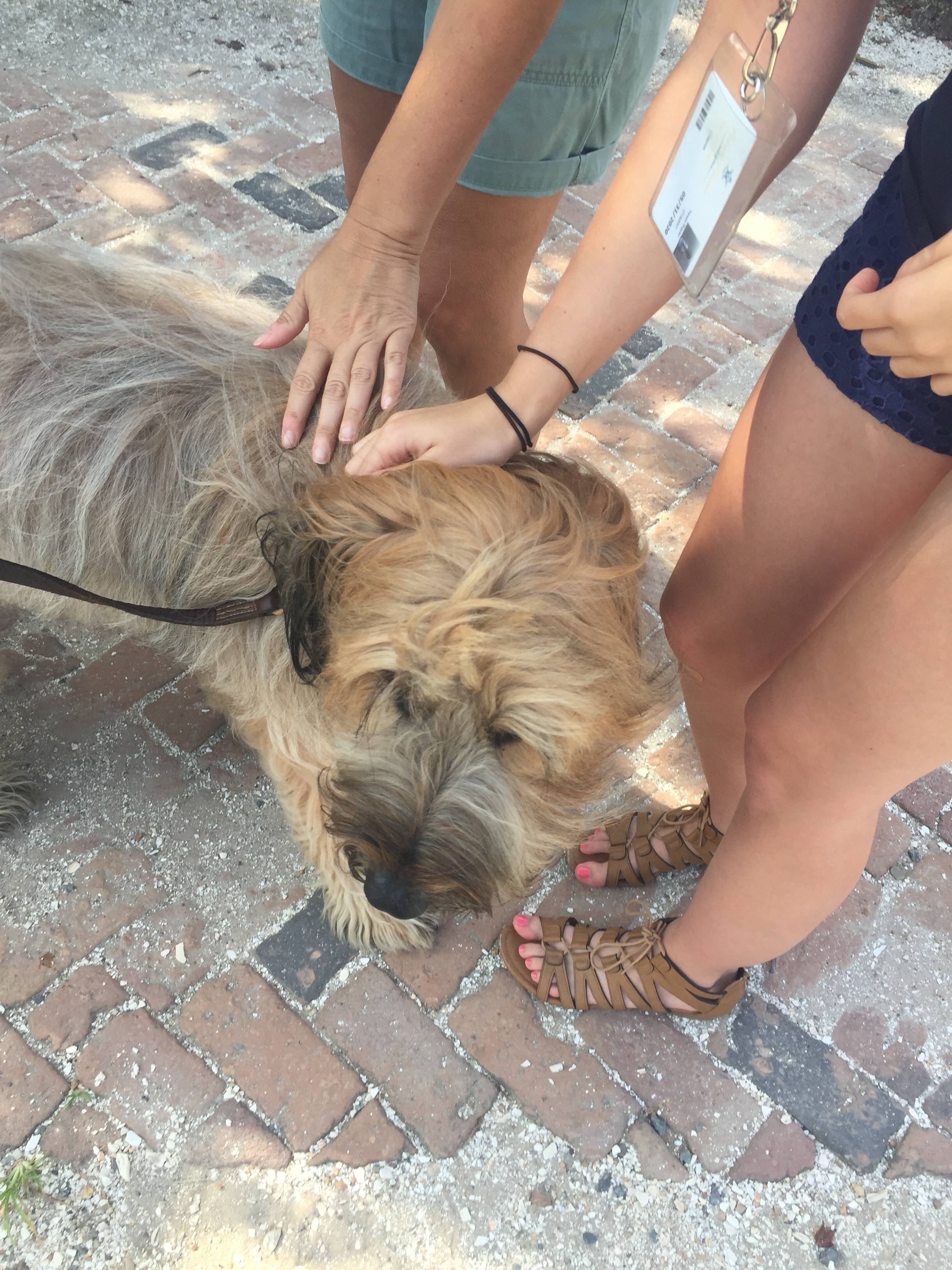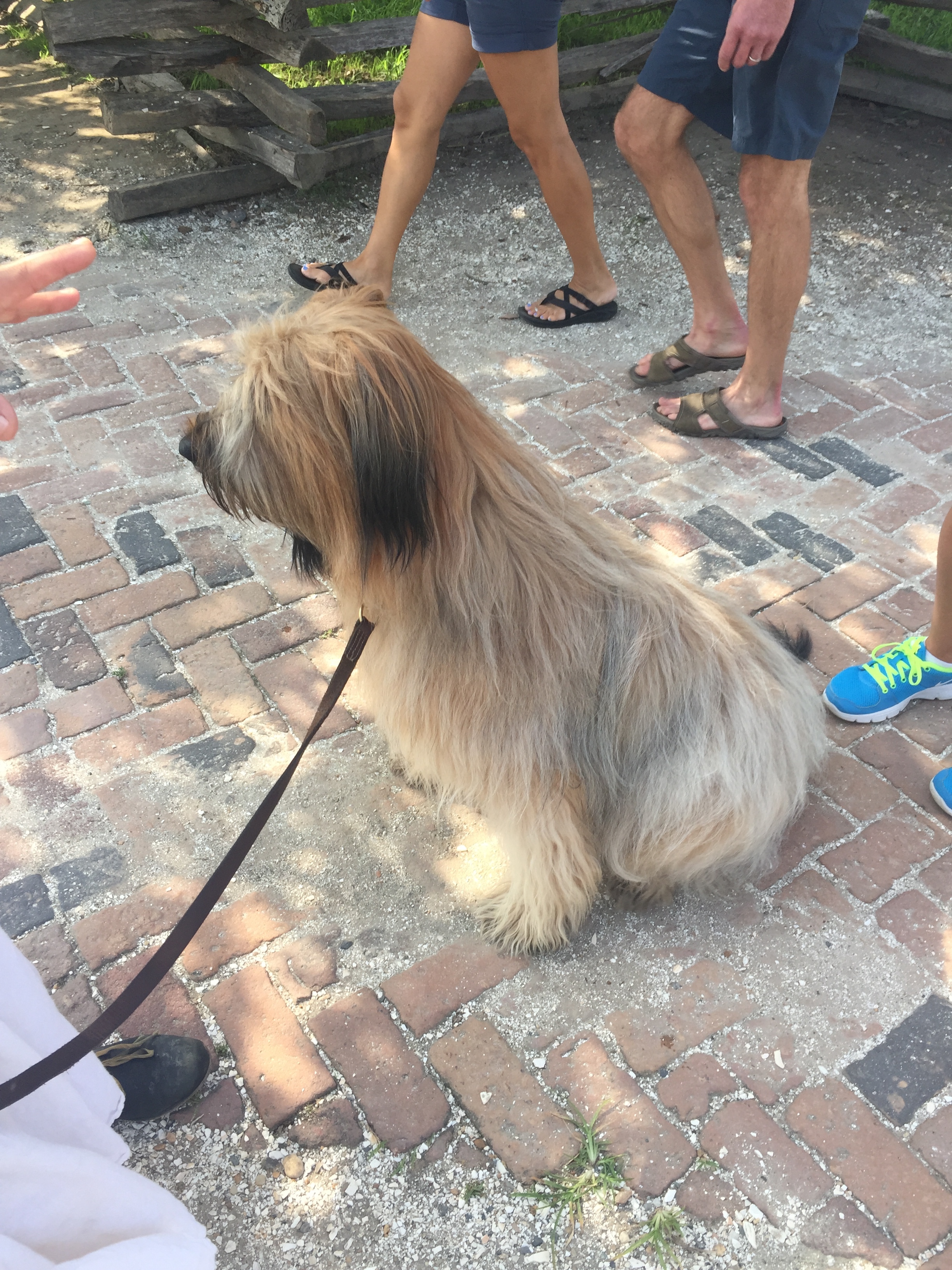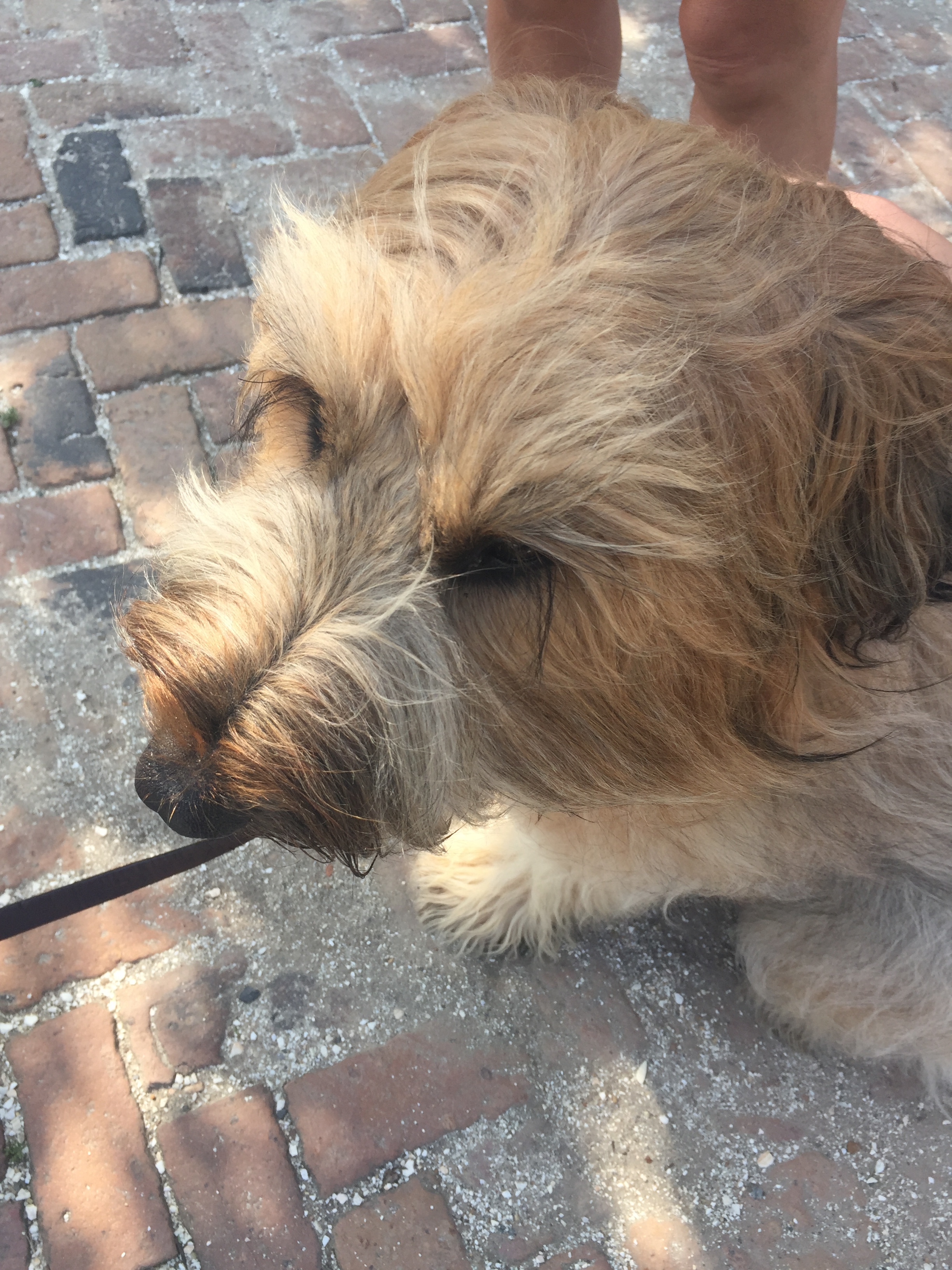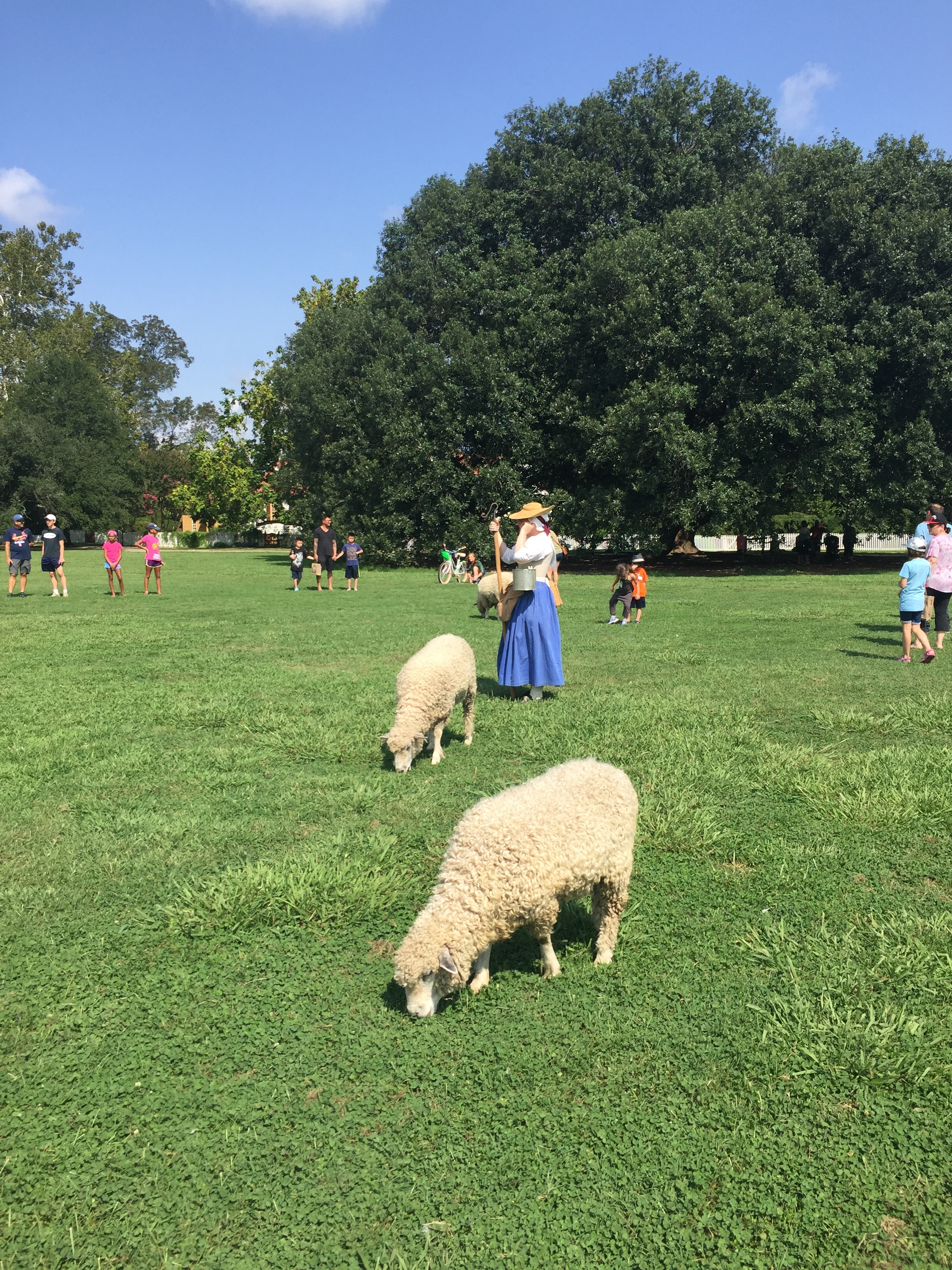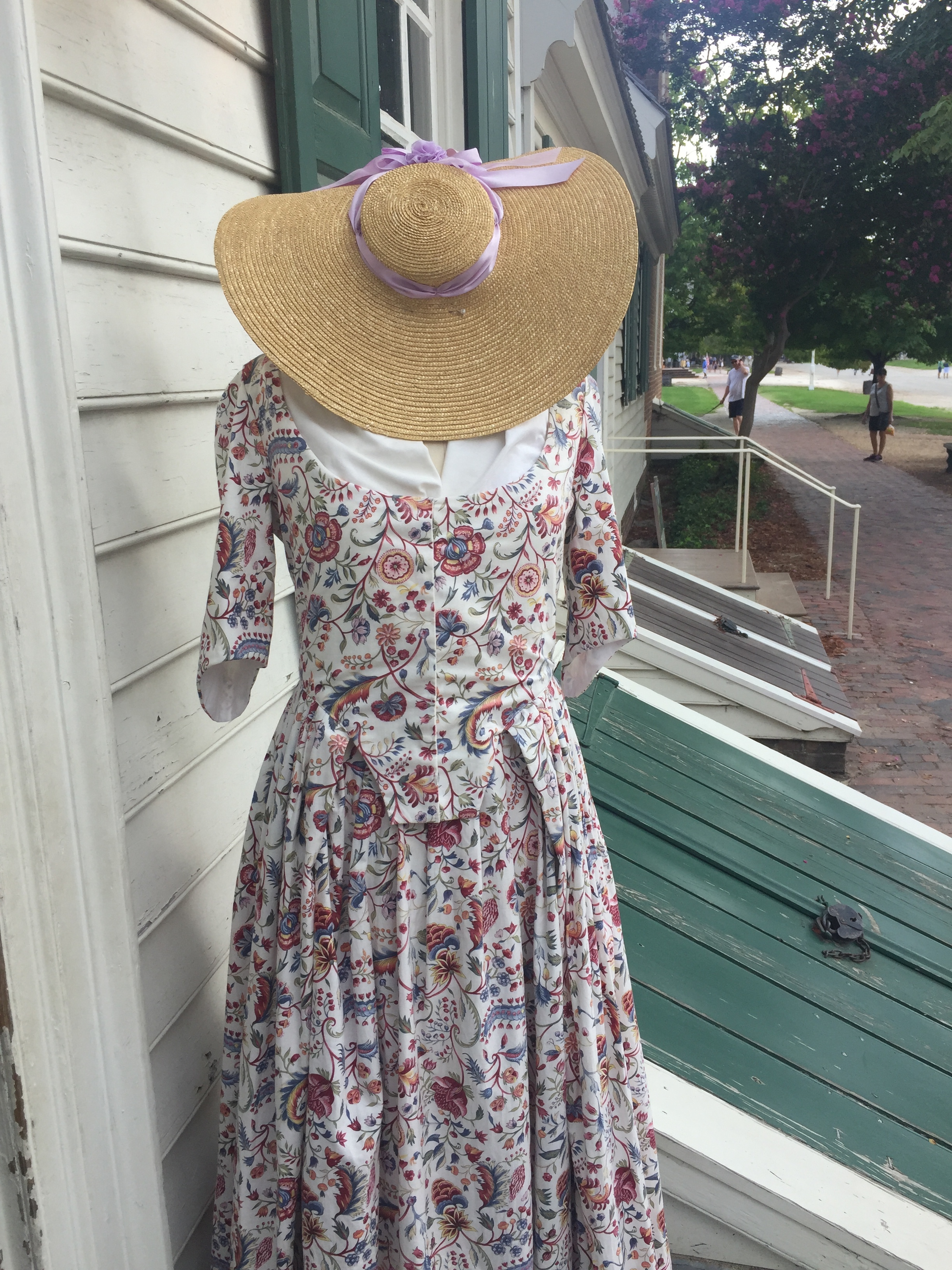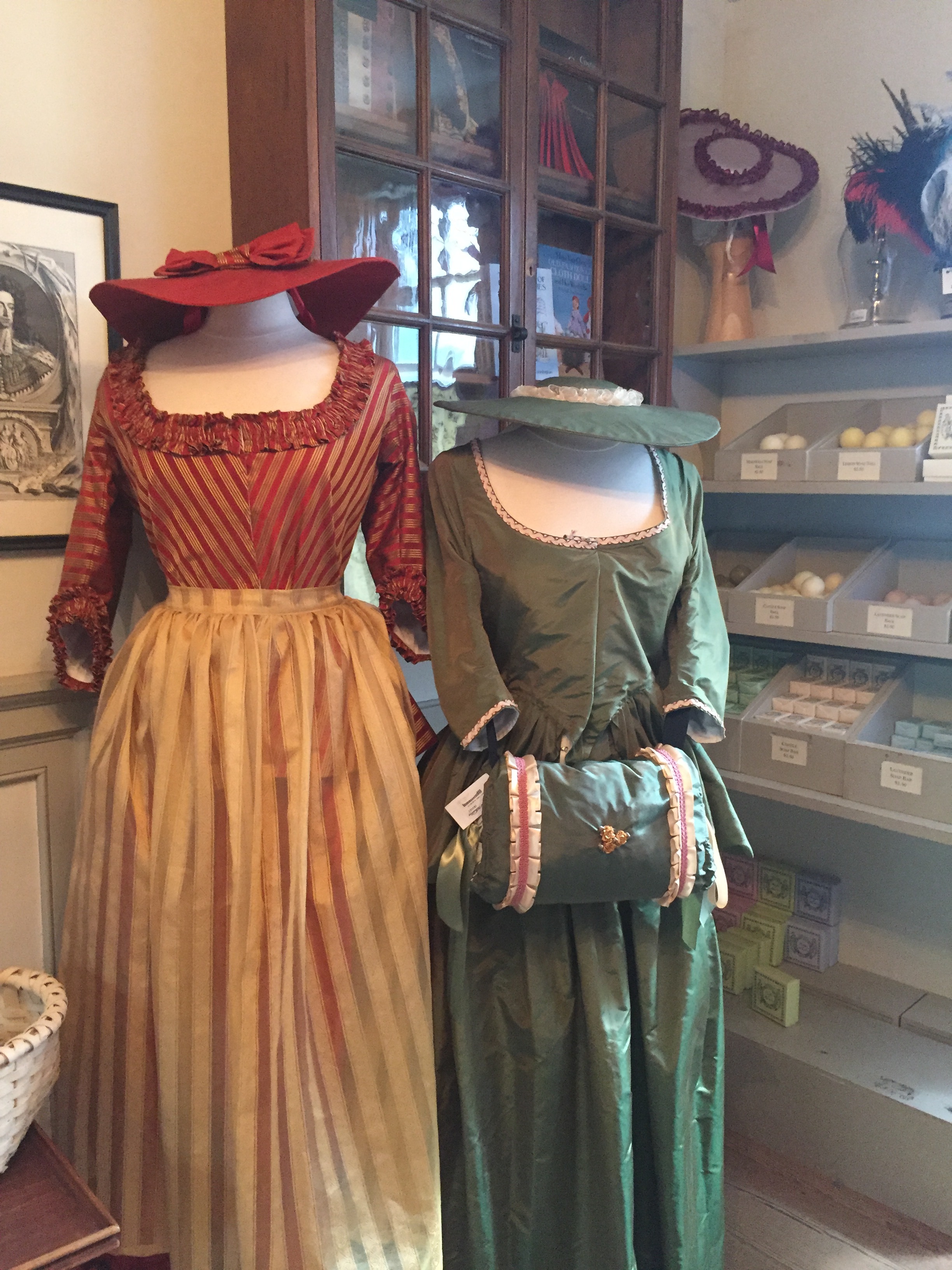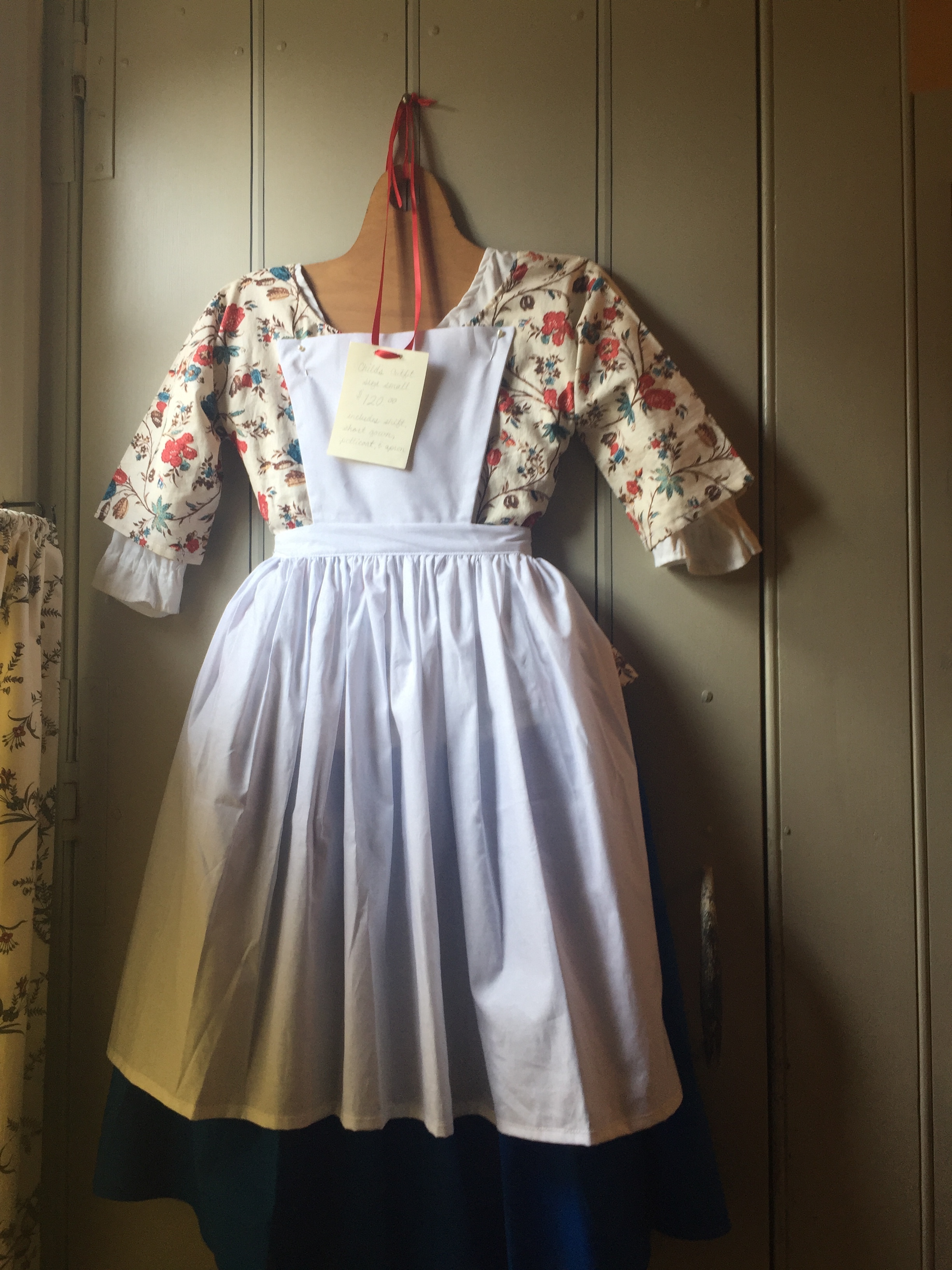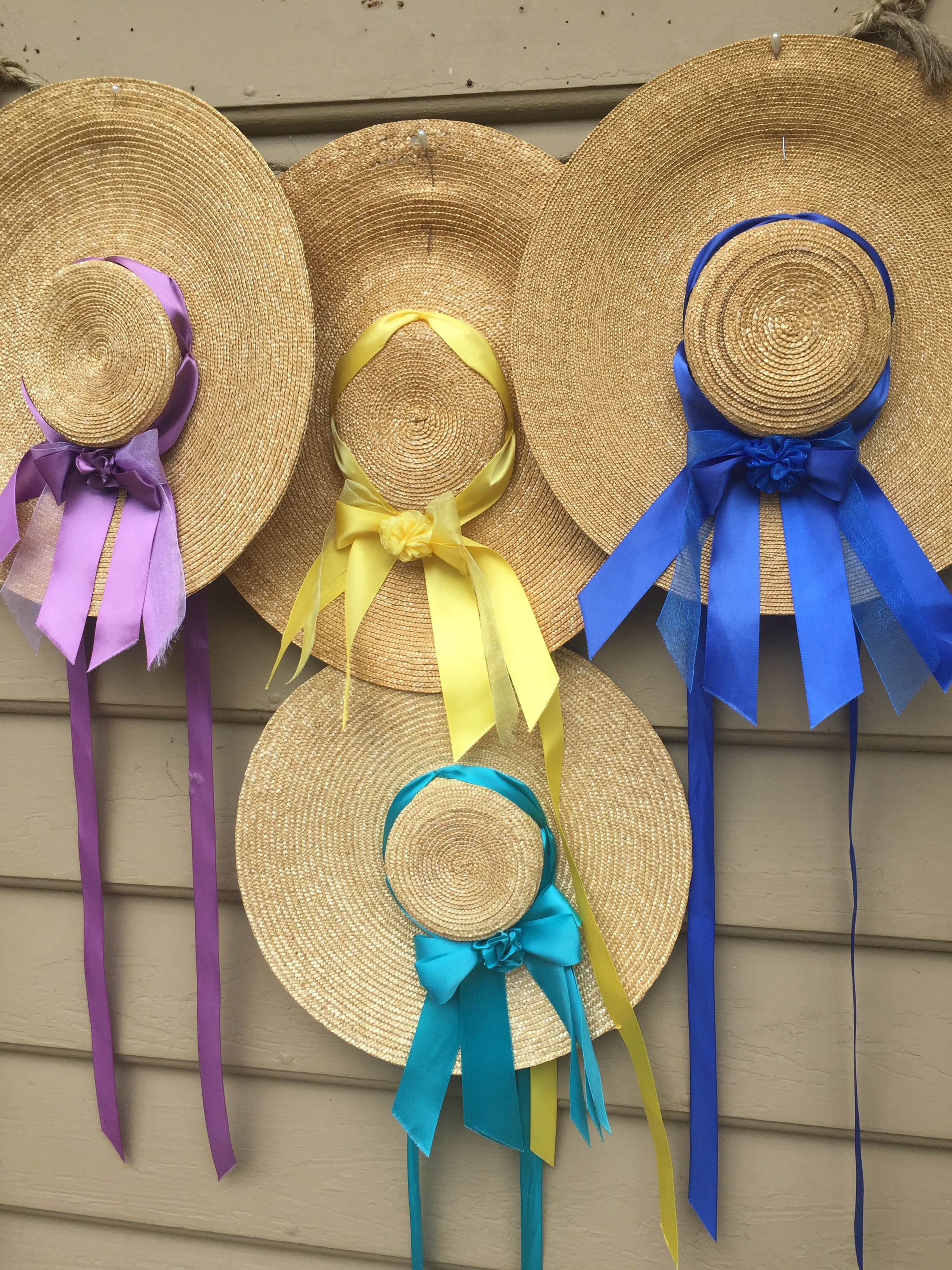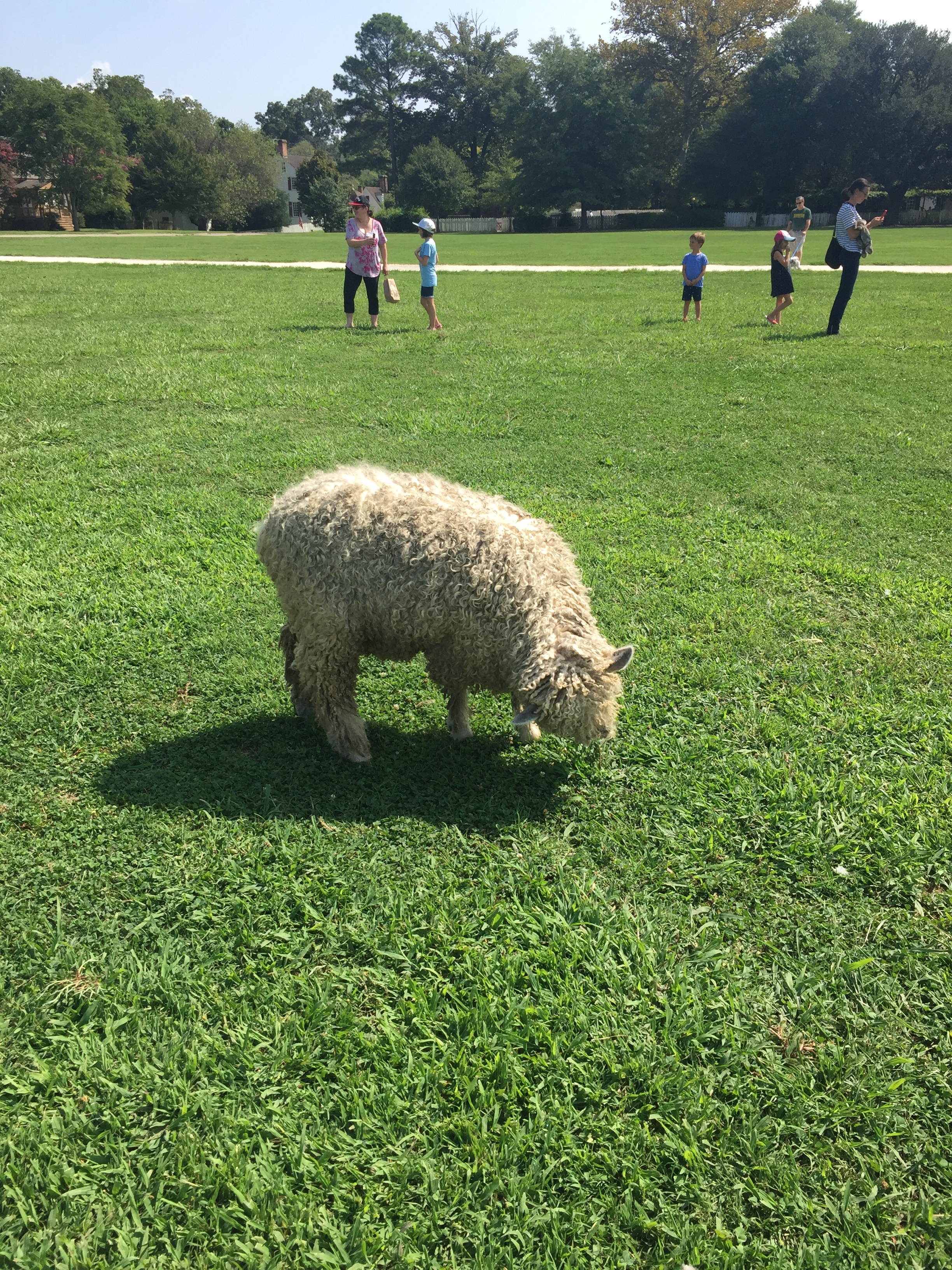Freshly dyed yarn in the weaver's shop at Colonial Williamsburg
This is an extra special yarn along, because today we're not talking about knitting, we're talking all about yarn! We're taking a field trip to CW and the Weaver's!
A few months before I visited CW, I heard that it was possible to buy yarn that was completely handmade by the artisans at Williamsburg, using 18th century methods. Of course, this piqued my interest! I knew that I was going to want some of this special yarn.
The yarn at CW starts with the wool, of course. The wool comes from their herd of Leicester Longwool sheep.
Leicester Longwools were developed in the mid-18th century by Robert Bakewell of Leicester, England. The breed became popular throughout the British empire; George Washington purchased Leicester Longwools for his flock at Mount Vernon.
According to the Leicester Longwool Sheep Breeder's Association, "The fleece of the Leicester Longwool is prized by hand spinners and crafters for its curl, soft handle, and lustrous beauty... The wool dyes exceptionally well, maintaining the purity of color; the natural luster still shines through. This premium wool is very versatile, working well for combing for worsted products, carding for woolen products, and felting projects. "
The sheep are very rare these days, and CW plays a big role in keeping the breed alive.
So, we have this gorgeous wool, which looks like this, in its raw state:
Check out that curl!
The wool is incredibly soft, even in this "raw" state, and really pretty. At least, these pieces are!
The sheep shearing is done by other people. Before it reaches the weavers, the wool also has to be skirted (taking out pieces that are too short or too matted to use), and scoured (cleaned).
After the wool is clean and dry, it's ready to card.
Here you can see a few things--raw wool, that needs picked over (in the crock), wool that's been cleaned, but needs carded (back basket), carded wool that's being spun (on the spinning wheel), and finished thread/yarn on a bobbin (in the yellow basket, foreground). The bobbin will go into a shuttle, to be used in weaving, as seen below.
The weaver is holding the shuttle in her left hand; here, she's weaving linen cloth.
After the wool is spun, either with a drop spindle or on a spinning wheel, and the appropriate thickness reached (I'm simplifying, massively, for our purposes), it's time to dye!
At CW, there's an entire book about how to dye with their natural dyes. Since the colors are all natural, it's really hard to reproduce exactly the same colors. In fact, it's probably impossible. So when I went to buy my yarn, I chose two skeins that were close--but they're not identical.
You can see, even dyed in the same vat, they're different--but close enough! The differences really drive home the hand-dyed nature of it, for me.
Here's what the CW website says about 18th century dyeing:
Nature provided the colors used in dyeing textiles in the 18th century. Today, Colonial Williamsburg’s weavers use the same 18th-century recipes for dyes – all safe enough to drink. An insect called the cochineal from South America makes the color red. 70,000 cochineal are needed to make a pound of red dye that can turn everything from leather to makeup and frosting red – including paint and textiles. Brown comes from walnuts, blue from indigo from South Carolina, Spain, or South America. Purple comes from the Spanish log wood tree, and turmeric from India gives yellow its hue. Orange comes from the root of the madder plant.
Wool is the easiest fabric to dye; cotton is more difficult, and linen is the most difficult of all – the dye tends to sit on the linen, in a sense, not in it. Dyeing was often done on plantations, using different colors of clothing to identify slaves from the same plantation – colorful and expressive folk art came from this practice as slaves used the rich colors to express individuality. (For the rest of the article, click here.)
As you can see, the weavers at CW get incredible colors from their natural dyes! They were really beautiful, even more so in person.
I hope this post gives you a taste at how difficult it is to make yarn, especially if you're doing it completely by hand! I'm so glad I was able to purchase some of it!
If you go to CW and are looking for yarn, I found it for sale in the Prentis store and at the Milliner's. Be warned: It's going to cost you more than the $10 skein at Jo-Ann's! But I hope after reading this you'll see why, and appreciate the artistry that goes into handcrafting yarn.
Some articles, if you want more:
"Everything you've been dyeing to know about 18th century weaving", Making History Now
"Weaver", history.org
"Weaving, Spinning, and Dyeing" Colonial Williamsburg Journal
Hamrick, Max. Organic Fiber Dyeing: The Colonial Williamsburg Method. AQS Publishing.




